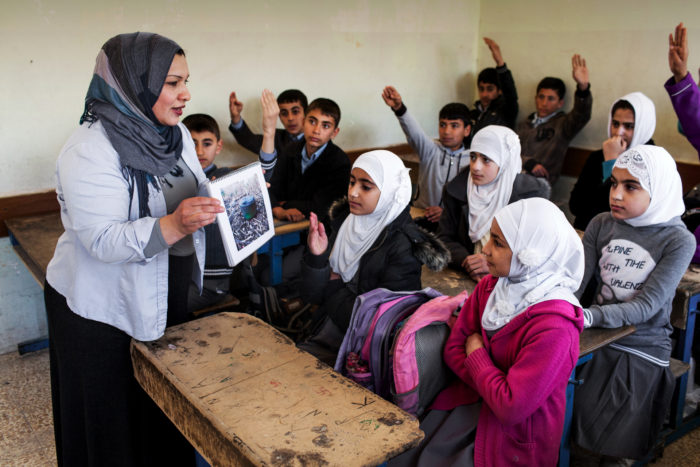Once regarded as having one of the best education systems in the region, Iraq has had a difficult history with its education. From 1970 to 1984, Iraq had achieved multiple accomplishments, such as lowering the rate of illiteracy in children ages six to 12 to less than 10 percent and having an equal inclusion of genders in the classroom. Since then, girls’ education in Iraq has faced significant setbacks.
How Education in Iraq Fell
The war with Iran in 1980, the Gulf War in the 1990s and the 2003 Invasion of Iraq have greatly damaged the once inspiring education system. With one in five schools destroyed and unusable, teachers having to work double shifts for smaller pay and nearly 3.5 million children irregularly attending, Iraq’s education has hit a low point. Unfortunately, girls’ education in Iraq seems to have been affected the most.
Pushback Against Girls’ Education in Iraq
Many Iraqi families see education as a dangerous thing for their daughters. Through learning critical thinking skills and how to read and write, many families worry that their daughters will fall into an unhappy marriage. With 30 percent of Iraqi girls in rural areas never even attending primary school and illiteracy rates twice as high with women than with men, it is clear that girls’ education in Iraq is of high necessity.
One girl relayed on an Iraqi radio show what her father had told her. “If a girl studies too much, it will just make people get divorced,” she claims he said. “If my daughter goes to university, she will become very stubborn. Her husband won’t like this, and will eventually divorce her.”
Potential for the Future of Education
However, with the battle over the city of Mosul finally coming to an end, education for Iraqi children, especially girls, might finally be improving. UNICEF has been supplying desks, chairs and other necessary supplies to schools where the teachers have long been the ones supplying these needs, even when those teachers have not been paid in three years.
One school receiving help is Saint Abdul Ahed School for Girls. Even though the school has no electricity or running water and only 17 teachers on staff, it manages more than 1,100 girls. Each and every one of the girls is eager and ready to come back to school, though.
Rawan, 11, explained just how important being able to come back to the classroom was for her. “We have to learn to develop our thinking so we can build our future, and our country,” she says.
One teacher at the school shared with UNICEF how enthusiastic her students are. “The kids are overjoyed to come back,” she says. “Education heals.” Saint Abdul Ahed is only one of many schools within Mosul that has been able to reopen thanks to UNICEF. 100 other schools have also been reopened, serving 75,000 children.
While many of these schools deal with overcrowding, lack of electricity and water and overworked teachers with little pay, the dedication to improve girls’ education in Iraq is inspirational. With continued work, young women will soon be able to receive the same rights to education as their male counterparts.
– Marissa Wandzel
Read original article
